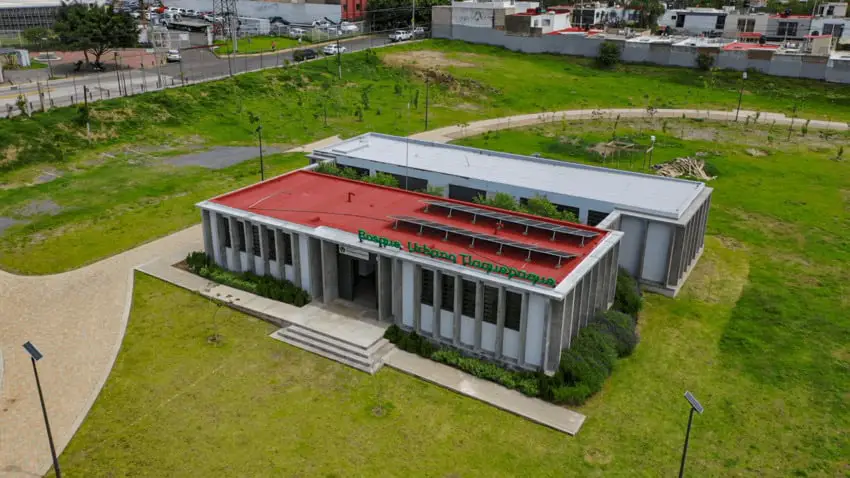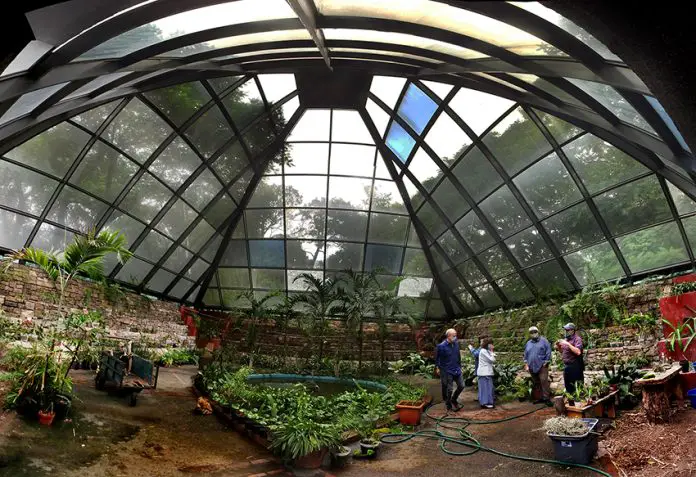You don’t have to look far to find the locations of Guadalajara’s thirteen urban parks plus info on what they offer. Just check their website and you’re on your way! But if you’d like to know why these city parks keep winning awards — like the green flags fluttering over some of them — you will have to dig a little deeper.
To get the story, I visited biologist Karina Aguilar, award-winning Conservation Manager of Guadalajara’s Metropolitan Urban Park Agency (AMBU), at her headquarters tucked away inside the city’s Parque Agua Azul.

“This city park system didn’t exist a few years ago,” Aguilar told me. “Parks were operated independently, which meant that those located in affluent neighborhoods were clean and well run, while those in poorer neighborhoods were often in bad shape.”
“However, in 2018, a project to upgrade one park was so successful, it sparked a kind of revolution,” Aguilar says. “The renovation of the beautiful Parque Colomos, located in the northwest corner of the city, turned out so attractive and popular that it was decided to create an umbrella organization for all the parks in all the municipalities making up Greater Guadalajara. So now, every one of our parks has the same standards of cleanliness and services: not only services for people who visit the parks but also services for the wide variety of animals who live in them. On top of that, today, admission to all city parks is free.”
Pollinator gardens attract bees and bats
Parque Agua Azul is well known for its orchidarium, aviary and butterfly house, but upon arriving at the park, Aguilar’s first project was to dig up a seldom used parking lot and transform it into a pollinator garden.
This garden is filled with flowering plants and trees, all of them hardy species that can survive without a lot of care. These include lavender, rosemary, milkweed, sage, plumbago, petunias, azaleas and dahlias.

At the moment, the Guadalajara metro area has 23 pollinator gardens. Their plants attract bees, wasps, butterflies, moths and ants, as well as larger animals like hummingbirds and bats.
“It would be wonderful if the animals in our city parks could get from one park to another via green corridors,” Aguilar told me.” but that’s not the case. However, flying creatures don’t need corridors. All we have to do is fill the city with pollinator gardens and they will go from one to another… and that’s just what we are doing. We call our project Conectando con Alas; Connecting with Wings.”
From disaster site to urban forest
Another concept Karina Aguilar is experimenting with is rewilding: returning a piece of land to its natural, uncultivated state.
Rewilding is happening right now in what could be called Guadalajara’s most unlikely park. This is Bosque Urbano Tlaquepaque, which started as a huge gully filled with the debris left over from the horrendous 1992 gasoline explosions in the city’s sewers, a disaster which killed and injured hundreds.

The site, which covers ten hectares, lay abandoned for years. “Then,” Aguilar told me, “the city decided to turn the place into an impounded vehicle yard. When the people of Tlaquepaque found out about that, they weren’t happy. We don’t want an impound yard here, we want a park, they said.”
The result was a rewilding project in which 4,000 trees, all native species, have been planted.
“It’s a long-term project,” Aguilar told me. “It will take 20 years. But people living all around the park bring water to those trees from their homes. In their minds, they can already see that bosque they’re dreaming about.”

Green flags over Guadalajara
In recent years both the park system and Karina Aguilar have gained numerous awards and. Then, Aguilar proudly told me, “We finally decided to try for international recognition. We heard about the Green Flag Awards which began in the UK and are now recognized both in Europe and the U.S., and we said, ‘Let’s go find out how it works.’
“We discovered that they have a standard of eight principles and 27 criteria,” she says. “If you can prove that you live up to all these standards, you are allowed to fly the green flag in your park. To see if you qualify, a group of judges — they could be national or international — come to you and verify that your park follows all the rules. If so, they give you a green flag which you are allowed to display for one year. The next year, of course, you have to prove you are still following all those norms!”
Last year two of Guadalajara’s parks — Colomos, famed for its genuine Japanese garden and the Metropolitano, a favorite for jogging and cycling — were entered in the competition. Both were accepted.

“This year, Aguilar continued with a broad smile, “we again requested green flags for those first two parks, plus three new ones… and I just got word that, yes, we succeeded! Five of Guadalajara’s parks will now fly the coveted green flag.”
Canyon views and steam trains
Want to know which are the three new winners? Maybe one of them is Parque Puerto de la Barranca, the city’s tiniest park, but the one with the best view, looking out over the 500-meter-deep Huentitán Canyon. Or perhaps one of those flags is flying over
Parque del Deán, which features a real steam locomotive you can climb around on. Better yet: how about checking out all 13 parks while you’re at it? You can’t go wrong!
John Pint has lived near Guadalajara, Jalisco, for more than 30 years and is the author of “A Guide to West Mexico’s Guachimontones and Surrounding Area” and co-author of “Outdoors in Western Mexico.” More of his writing can be found on his website.
